Why Brand Advertising Matters For Paid Media Performance
The twin forces of disrupted attribution and changing user behavior are reshaping how audiences discover brands.
Google’s mass rollout of AI Overviews and its experimental AI Mode are not surface-level UX tweaks; they represent a fundamental transformation of the search experience – one that compresses the journey from query to answer.
PPC is now a more competitive, constrained, and less predictable environment.
If Google is effectively skipping traditional landing pages in certain query classes, by serving direct answers, the margin for interrupting or influencing a user shrinks dramatically.
If you are not building a brand that people proactively seek out – or that AI systems actively reference – you are playing an increasingly expensive, inefficient game.
Brand Advertising Isn’t Brand Bidding
First, let’s define the terms clearly, as this distinction is often misunderstood in performance marketing circles.
Brand advertising refers to any paid activity designed to build awareness, familiarity, and positive association with your brand.
The primary objective isn’t immediate conversion; it’s to create a demand and a pipeline that your lower-funnel activities can later capture.
By contrast, brand bidding occurs when someone already knows your brand and actively searches for it.
Bidding on your own brand terms in Google Ads or Bing ensures you’re visible when that existing demand materialises – but it’s harvesting, not creating demand.
Brand advertising builds the mental availability that ensures your brand is considered when a user enters a buying journey. Brand bidding simply captures people who were already predisposed to choose you.
Both are important, but confusing the two leads to systemic underinvestment in activities that generate future growth.
In longer buying cycles, particularly in B2B, high-ticket B2C, and considered-purchase categories, persistent brand presence is critical.
Research from the Ehrenberg-Bass Institute consistently shows that memory structures built over time have a powerful impact on future buying decisions.
Furthermore, research points to the fact that if you’re not already on someone’s shortlist before they start looking for a solution, you’re unlikely to be chosen vs. those brands who are.
When the balance between brand and performance activity is right, each amplifies the other, creating what is called the Multiplier Effect, a virtuous cycle where brand-driven demand lowers cost-per-acquisition (CPA), improves Quality Scores, and enhances overall media efficiency.
The Advertising ‘Doom Loop’
Despite its proven impact, brand advertising remains chronically underfunded in performance-led organisations. Why?
In part, because it doesn’t fit neatly into short-term attribution models. Brand activity often influences outcomes weeks or months later, in ways that are difficult to measure through traditional last-click frameworks.
This measurement gap creates what WARC calls the “Advertising Doom Loop.” Here’s how it unfolds:
- Advertisers focus disproportionately on easily measurable performance channels, such as paid search.
- Brand-building budgets are cut because they lack immediate, attributable return on investment (ROI) in platforms like Google Analytics 4.
- As brand equity erodes, acquisition costs rise and conversion rates fall.
- To compensate, advertisers double down on short-term tactics, further starving brand investment.
- The cycle repeats, gradually eroding long-term growth potential.
This loop is not theoretical. It’s been observed repeatedly across sectors and is backed by large-scale research studies and documented in a recent WARC study.
The brands that escape the doom loop understand that marketing is interconnected.
Short-term sales activation delivers immediate returns, but brand building provides compound growth over time, lowering customer acquisition costs (CACs), increasing customer loyalty, and insulating against category volatility.
Ignoring brand advertising might look efficient quarter-to-quarter, but over a multi-year horizon, it is a recipe for brand decline.
Why Brand Interest Is Your Most Defensible Asset
In a world of AI-curated answers and zero-click behavior, one channel remains relatively stable: branded search interest.
When a user types your name, your product, or your branded category term into Google, you control the narrative. These searches are:
- Cheaper than competitive generic terms.
- Higher converting, often by a factor of 2x or more.
- Less vulnerable to displacement by AI Overviews, as of current observation (which still reference brand entities prominently).
At Hallam, we’ve seen this play out across multiple paid search accounts.
Brands with stronger brand search volumes and higher unaided awareness consistently achieve lower CPAs, better Quality Scores, and more efficient media performance across both search and display.
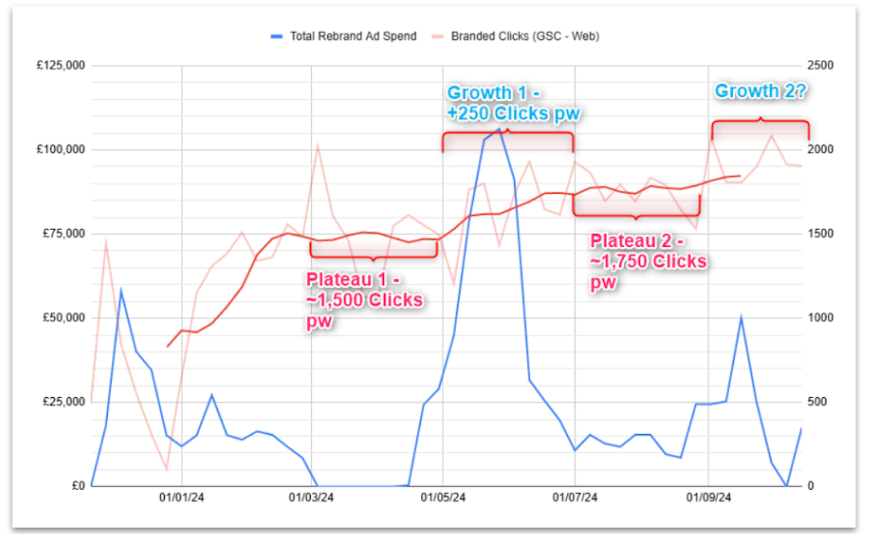 The impact of running brand advertising campaigns on search demand and clicks for one of our clients (Image from author, April 2025)
The impact of running brand advertising campaigns on search demand and clicks for one of our clients (Image from author, April 2025)This shows the compounding value that brand equity brings to lower-funnel paid media campaigns.
Measurement Solutions
One of the biggest challenges performance marketers face today is how to measure the impact of brand campaigns.
Marketers must treat brand search volume, direct traffic trends, and assisted conversions as leading indicators of paid media effectiveness.
If your top-of-funnel strategy includes YouTube, connected TV, or programmatic display, shifts in these upstream metrics are early signals of success, even before conversions materialize.
For example, metrics that directly track interest in your brand, such as share of search, have been proven to be leading indicators of market share.
Moreover, investment in econometric modeling, brand uplift studies, and incrementality testing will become critical tools for understanding the true impact of marketing spend and providing a holistic view of performance as we move into the future.
When And How To Get Started
If paid search is becoming more competitive and less reliable for visibility, the logical response is to rebalance your media mix, and that starts with brand.
1. Run Paid Media To Uplift Brand Search Volume
Don’t just optimize for direct conversions. Optimize for subsequent branded search. YouTube, connected TV, and upper-funnel Meta campaigns can all drive brand interest that pays off later through more efficient search activity.
Tracking this means looking beyond last-click. Use view-through conversions, uplift studies, and brand search volume trends to measure the impact.
2. Invest In Non-Google Surfaces
A diversified paid media strategy is no longer a nice-to-have; it’s essential. That includes:
- YouTube Shorts and creator content to build brand relevance.
- Programmatic display and native ads on publisher sites may support discoverability
- Paid partnerships and sponsorships that build reputation across the web.
These touchpoints feed awareness, and could also contribute to the knowledge graph and large language models (LLMs).
3. Align PPC With SEO To Influence AI Outputs
Yes, SEO still plays a role, but performance marketers should work alongside organic teams to ensure:
- Branded pages are structured correctly for AI inclusion.
- Top-performing PPC assets (e.g., headlines, product descriptions) are reflected in organic content.
- Messaging consistency across paid and organic channels supports brand memorability.
Final Thoughts
Clicks are now harder to win. Impressions are becoming more expensive. And digital attribution data is increasingly unreliable.
In this environment, the brands that thrive will be the ones that people search for by name, that AI references unprompted, and that exist in the user’s mind long before they type anything at all.
That doesn’t happen by accident. It happens when paid media stops acting like a demand-harvesting function and starts behaving like a brand growth engine.
More Resources:
Featured Image: Master1305/Shutterstock
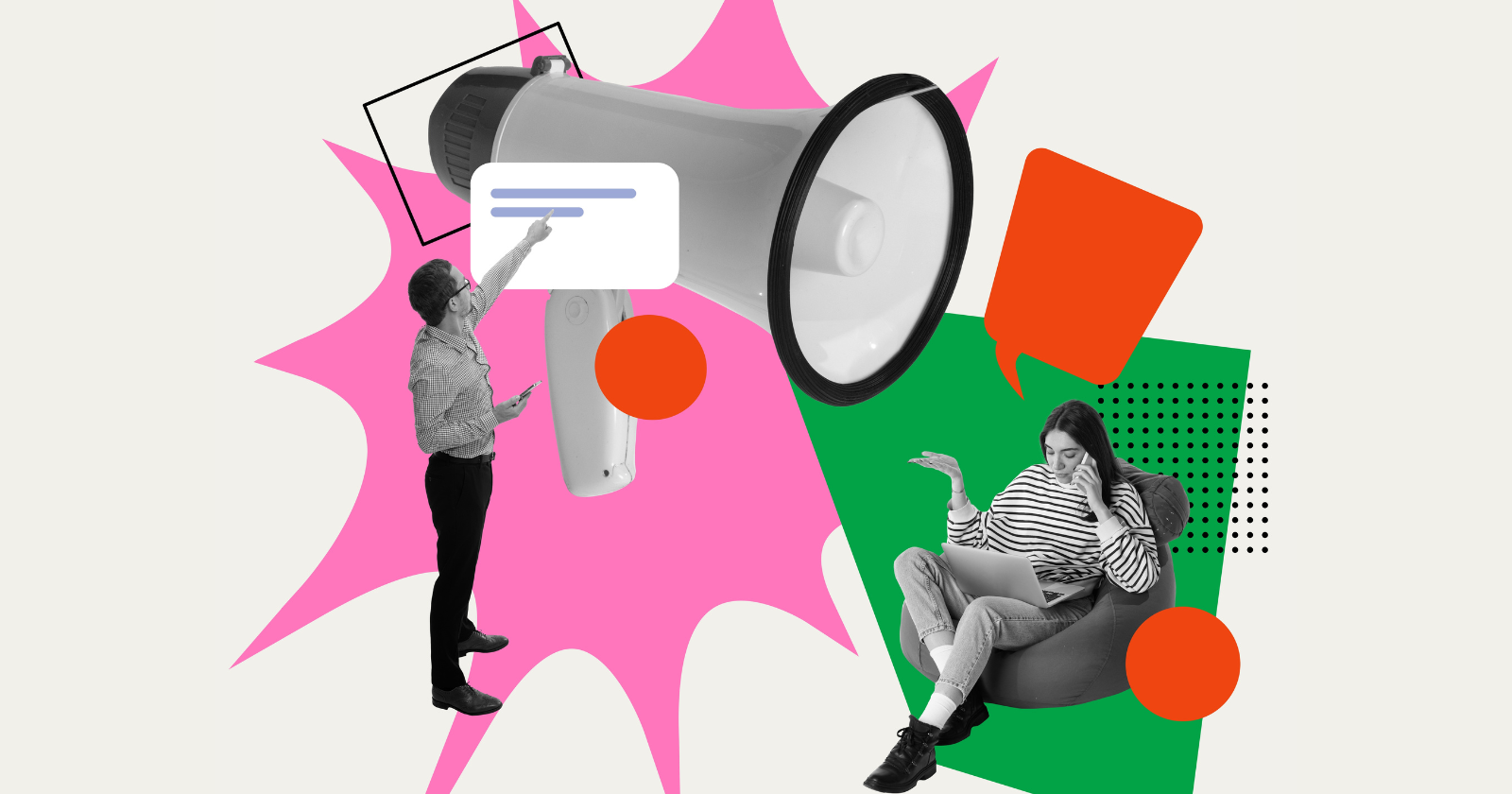
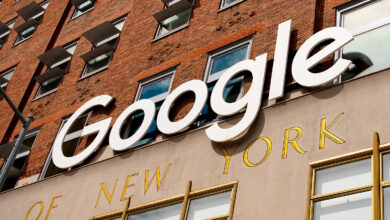
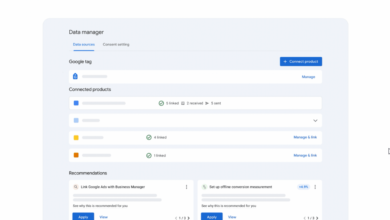
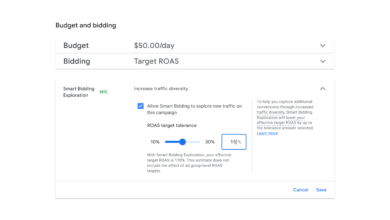
![How To Measure Topical Authority [In 2025] How To Measure Topical Authority [In 2025]](https://apktan.xyz/socialupdates/wp-content/uploads/2025/05/Testing-Googles-Post-AIO-Traffic-Claims-390x220.png)